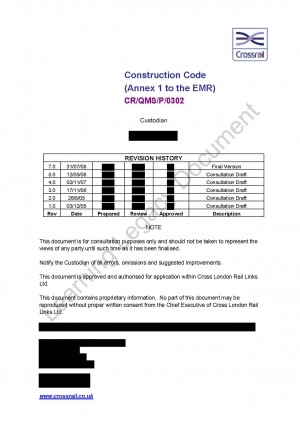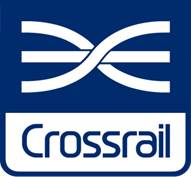The Construction Code forms part of the Environmental Minimum Requirements (EMR) for Crossrail. The Code was developed by Crossrail in consultation with local authorities and other relevant stakeholders during the passage of the Crossrail Bill through parliament. Its purpose was to provide reassurance to stakeholders as to the extent of the actual impacts of the construction of Crossrail by setting out a series of objectives and measures to protect the environment and limit disturbance from construction activities.
The Secretary of State provided reassurance to the local authorities and other stakeholders that the works would be subject to appropriate controls by contractually binding the nominated undertaker to comply with its provisions. However, it was also written in such a way as to leave the nominated undertaker with a degree of flexibility to develop more site specific construction plans and associated environmental management plans once designs were more fully developed and construction methods defined by contractors.
The Crossrail environmental impact assessment (EIA) established mitigation measures that would avoid and reduce the adverse environmental impacts that were identified as likely to arise during the construction and operation of the scheme. The Crossrail Environmental Statement (ES) was submitted to parliament together with plans and other related information in 2005 alongside a hybrid bill to provide the deemed planning permission and the powers to build Crossrail and associated works.
During the passage of the hybrid bill through parliament, a number of stakeholders, including local authorities and statutory bodies, were seeking reassurance on the application of the mitigation measures to the works. The Code was developed by Crossrail in consultation with local authorities and other relevant stakeholders to provide reassurance as to the extent of the actual impacts of the construction of the project by setting out a series of objectives and measures to protect the environment and limit disturbance from construction activities. It was based on the mitigation from the Crossrail ES, and drew upon experience from other major projects that were underway or nearing completing at the time (such as Heathrow Terminal 5, Channel Tunnel Rail Link and Thameslink) and on the construction codes of local authorities along the route and it represented the current industry best practice at the time. The topics covered by the Code include working hours, traffic management, noise and vibration, air quality, waste management, recycling, ecology, archaeology and settlement.
The Crossrail Act received Royal Assent in July 2008. The powers to construct, operate and maintain Crossrail are vested in “the nominated undertaker” and the Secretary of State appointed Crossrail Limited to that role. The Secretary of State provided reassurance to the local authorities and other stakeholders that the works would be subject to appropriate controls by contractually binding the nominated undertaker to comply with the provisions of the Code. This included ensuring that the relevant provisions of the Code were observed by contractors and subcontractors.
The Code provided reassurance to local authorities and other stakeholders that the works would be subject to appropriate controls, but it was written in such a way that it retained a degree of flexibility that allowed the development of more detailed proposals for construction plans and their associated environmental management plans.
Download the document here.


